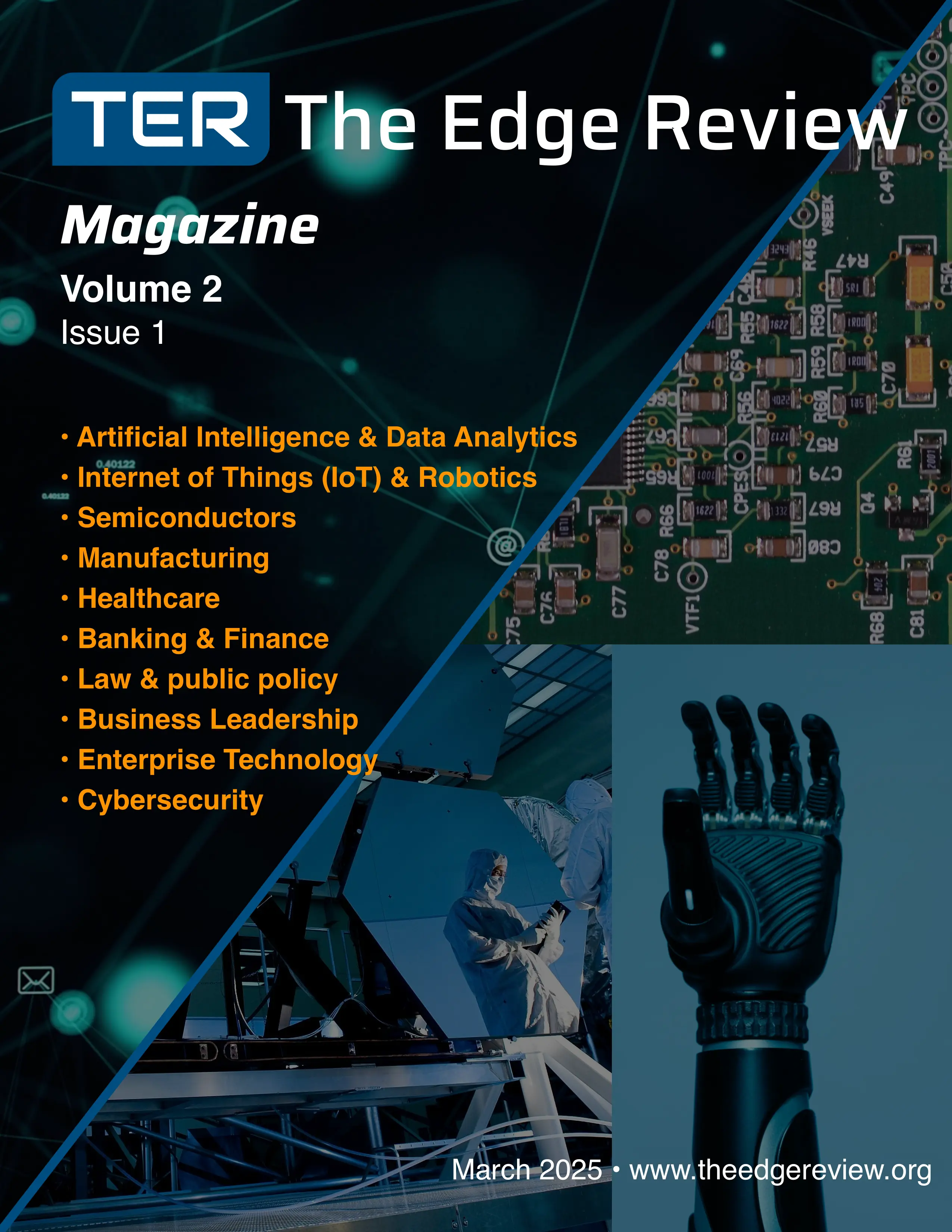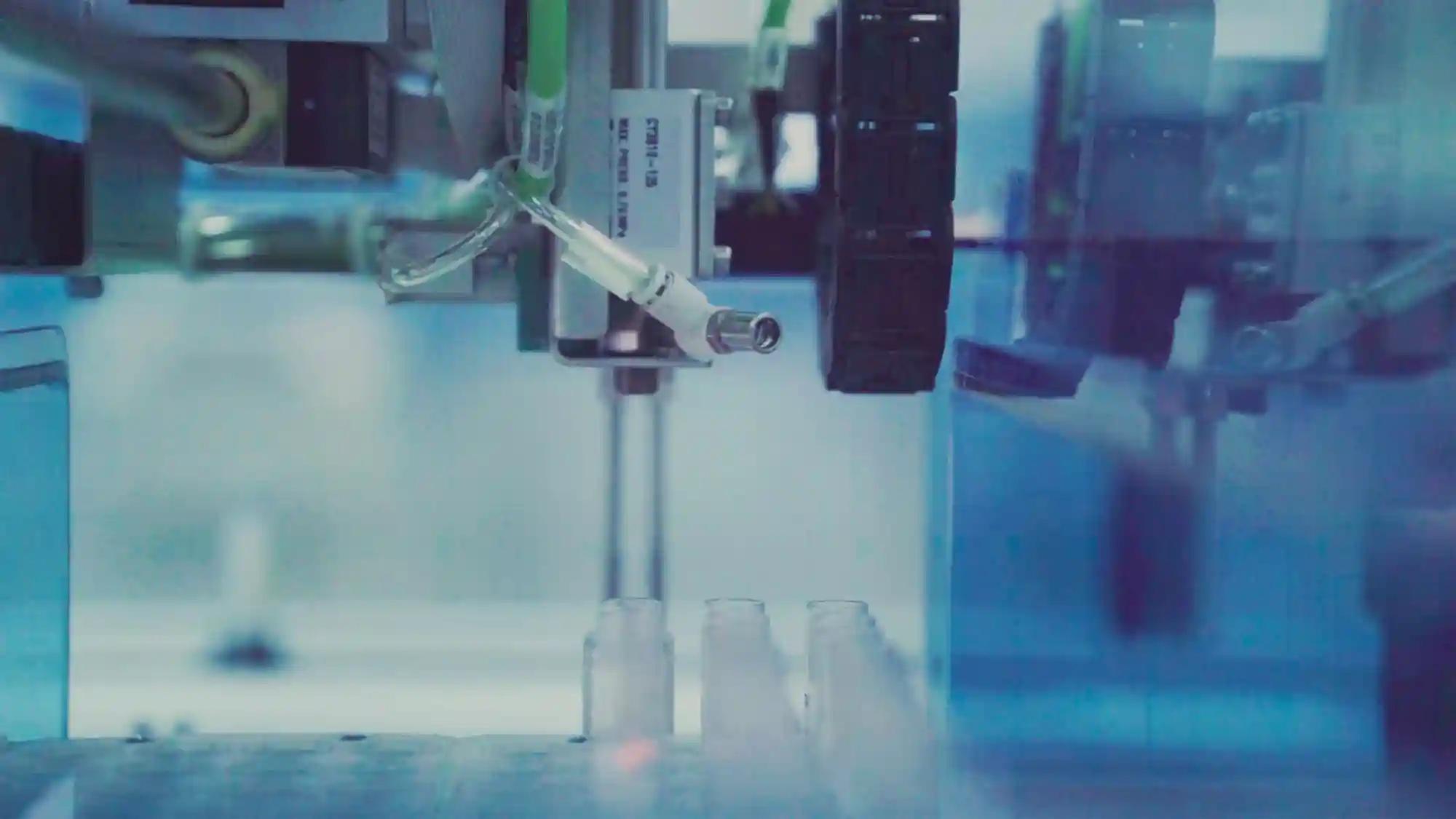
The Edge Review Magazine - Volume 2 - Issue 1
From quantum computing to medical robotics - exploring breakthrough technologies reshaping our world.
Articles in this issue

Enhancing Application Resiliency with Large Language Models
By Kunal Khanvilkar
In today’s digital economy, application resiliency and robust disaster recovery (DR) planning are paramount. Outages and data loss can halt business operations and inflict severe financial and reputational damage. High-profile failures underscore the stakes: for example, Delta Air Lines suffered a massive IT outage triggered by an antivirus update glitch, resulting in thousands of flight cancellations and hundreds of millions in losses. Such incidents highlight how inadequate DR strategies leave ...
Published 11th Apr, 2025

Enhancing Transparency in Generative AI: Strategies for Ethical and Accountable Deployment
By Srinivas Reddy Bandarapu
Generative AI (GenAI) has swiftly moved from research labs into mainstream industry applications, powering everything from automated content creation to decision support systems. A 2023 global survey by McKinsey found that one-third of companies were already using GenAI in at least one business function [1], and the market for generative AI software and services surged to over $25 billion by 2024 [2]. This rapid adoption underscores GenAI’s growing role across sectors – but it also shines a spotl...
Published 21st Mar, 2025

How Dynamic Data Governance enables instant insights for unprecedented innovation
By Nishchai Jayanna Manjula
In today’s data-driven industries, decisions often need to be made on the fly using up-to-the-second information. Real-time data governance refers to managing data availability, quality, integrity, and security continuously as data is created, rather than retrospectively in batch processes [1]. This approach has become essential as data volumes and velocities explode. IDC projects that by 2025 nearly a quarter of the world’s data will be generated in real time [2], fueled by roughly 150 billion c...
Published 12th Mar, 2025

Empowering Scalable AI and Generative Innovation with Data Mesh Architecture
By Kiran Randhi
In today’s data-driven enterprises, data mesh architecture is emerging as a paradigm shift in how organizations manage analytical data at scale. Unlike traditional centralized data warehouses or data lakes, a data mesh decentralizes data management by aligning it with business domains and treating data as a product. This approach distributes data ownership to the teams closest to the data while maintaining overarching standards and governance. The motivation for data mesh arises from limitations ...
Published 12th Mar, 2025

Enhancing Reasoning in LLMs through Contrastive Estimation and Representation Engineering
By Tim Condello
Large Language Models (LLMs) have made tremendous strides, yet true reasoning remains a frontier challenge. These models often struggle with complex multi-step reasoning tasks, especially those requiring logic or intermediate calculations. Unlike straightforward queries (e.g., “What’s the capital of France?”), reasoning questions demand a chain of logical steps – for example, solving a math word problem or debugging code – which pushes LLMs beyond simple pattern matching. The critical value of ad...
Published 6th Mar, 2025

The Long Context Conundrum: Challenges and Innovations in Scaling LLM Memory
By Anjanava Biswas
In an era where AI assistants are expected to digest entire novels, multi-document dossiers, or hours of conversation, the demand for longer-context large language models (LLMs) is soaring. Top AI companies are racing to expand context windows: OpenAI’s GPT-4 introduced 32,000-token versions, Anthropic’s Claude leapt from a 9K to 100K token window (and later to 200K), and startups like AI21 have unveiled models with 256K-token capacity [1]. Google DeepMind is reportedly aiming even higher, with h...
Published 4th Mar, 2025

Beyond Traditional Computing: Silicon Photonics and Neuromorphic Architectures Shape Future Chips
By TER Technical Staff
As Moore's Law approaches its physical limits, semiconductor innovation is taking dramatic new directions. The convergence of silicon photonics and neuromorphic computing represents a fundamental shift in chip architecture, promising unprecedented improvements in processing speed and energy efficiency. Recent developments show that photonic-neuromorphic hybrid systems can achieve processing speeds up to 1000 times faster than traditional electronic circuits while consuming only a fraction of the ...
Published 9th Jan, 2025

Advancing Surgical Precision Through Next-Generation Soft Robotics
By TER Technical Staff
Recent advances in soft robotics are revolutionizing minimally invasive surgery, offering unprecedented levels of precision and safety in complex procedures. Clinical trials demonstrate that soft robotic surgical systems reduce patient recovery time by up to 40% compared to traditional methods, while increasing procedural accuracy by 35%. This transformation in surgical capabilities has driven rapid adoption, with over 200 medical centers worldwide now incorporating soft robotic systems into thei...
Published 30th Oct, 2024
At The Edge Review, we believe that groundbreaking ideas deserve a global platform. Through our multidisciplinary trade publication and journal, our mission is to amplify the voices of exceptional professionals and researchers, creating pathways for recognition and impact in an increasingly connected world.
Member%20--%3e%3c!DOCTYPE%20svg%20PUBLIC%20'-//W3C//DTD%20SVG%201.1//EN'%20'http://www.w3.org/Graphics/SVG/1.1/DTD/svg11.dtd'%3e%3csvg%20version='1.1'%20id='Layer_1'%20xmlns='http://www.w3.org/2000/svg'%20xmlns:xlink='http://www.w3.org/1999/xlink'%20x='0px'%20y='0px'%20viewBox='0%200%20200%2067.9'%20style='enable-background:new%200%200%20200%2067.9;'%20xml:space='preserve'%3e%3cstyle%20type='text/css'%3e%20.st0{fill:%234F5858;}%20.st1{fill:%233EB1C8;}%20.st2{fill:%23D8D2C4;}%20.st3{fill:%23FFC72C;}%20.st4{fill:%23EF3340;}%20%3c/style%3e%3cg%3e%3cg%3e%3cg%3e%3cg%3e%3cpath%20class='st0'%20d='M76.1,37.5c-0.4-2.6-2.9-4.6-5.8-4.6c-5.2,0-7.2,4.4-7.2,9.1c0,4.4,2,8.9,7.2,8.9c3.6,0,5.6-2.4,6-5.9H82%20c-0.6,6.6-5.1,10.8-11.6,10.8c-8.2,0-13-6.1-13-13.7c0-7.9,4.8-14,13-14c5.8,0,10.7,3.4,11.4,9.5H76.1z'/%3e%3cpath%20class='st0'%20d='M84,35.9h5v3.6h0.1c1-2.4,3.6-4.1,6.1-4.1c0.4,0,0.8,0.1,1.1,0.2v4.9c-0.5-0.1-1.3-0.2-1.9-0.2%20c-3.9,0-5.2,2.8-5.2,6.1v8.6H84V35.9z'/%3e%3cpath%20class='st0'%20d='M106.4,35.4c6,0,9.9,4,9.9,10.1c0,6.1-3.9,10.1-9.9,10.1c-6,0-9.9-4-9.9-10.1%20C96.5,39.4,100.4,35.4,106.4,35.4z%20M106.4,51.6c3.6,0,4.7-3.1,4.7-6.1c0-3.1-1.1-6.1-4.7-6.1c-3.6,0-4.6,3.1-4.6,6.1%20C101.8,48.6,102.8,51.6,106.4,51.6z'/%3e%3cpath%20class='st0'%20d='M122.4,48.9c0,2.3,2,3.2,4,3.2c1.5,0,3.4-0.6,3.4-2.4c0-1.6-2.2-2.1-6-3c-3-0.7-6.1-1.7-6.1-5.1%20c0-4.9,4.2-6.1,8.3-6.1c4.2,0,8,1.4,8.4,6.1h-5c-0.1-2-1.7-2.6-3.6-2.6c-1.2,0-2.9,0.2-2.9,1.8c0,1.9,3,2.1,6,2.9%20c3.1,0.7,6.1,1.8,6.1,5.4c0,5-4.4,6.7-8.7,6.7c-4.4,0-8.8-1.7-9-6.7H122.4z'/%3e%3cpath%20class='st0'%20d='M141.6,48.9c0,2.3,2,3.2,4,3.2c1.5,0,3.4-0.6,3.4-2.4c0-1.6-2.2-2.1-6-3c-3-0.7-6.1-1.7-6.1-5.1%20c0-4.9,4.2-6.1,8.3-6.1c4.2,0,8,1.4,8.4,6.1h-5c-0.1-2-1.7-2.6-3.6-2.6c-1.2,0-2.9,0.2-2.9,1.8c0,1.9,3,2.1,6,2.9%20c3.1,0.7,6.1,1.8,6.1,5.4c0,5-4.4,6.7-8.7,6.7c-4.4,0-8.8-1.7-9-6.7H141.6z'/%3e%3cpath%20class='st0'%20d='M156.1,35.9h5v3.6h0.1c1-2.4,3.6-4.1,6.1-4.1c0.4,0,0.8,0.1,1.1,0.2v4.9c-0.5-0.1-1.3-0.2-1.9-0.2%20c-3.9,0-5.2,2.8-5.2,6.1v8.6h-5.3V35.9z'/%3e%3cpath%20class='st0'%20d='M174.2,46.8c0.1,3.3,1.8,4.9,4.7,4.9c2.1,0,3.8-1.3,4.1-2.5h4.6c-1.5,4.5-4.6,6.4-9,6.4%20c-6,0-9.8-4.1-9.8-10.1c0-5.7,4-10.1,9.8-10.1c6.5,0,9.7,5.5,9.3,11.4H174.2z%20M182.7,43.5c-0.5-2.7-1.6-4.1-4.2-4.1%20c-3.3,0-4.3,2.6-4.4,4.1H182.7z'/%3e%3cpath%20class='st0'%20d='M190.9,39.5h-3.1v-3.5h3.1v-1.5c0-3.4,2.1-5.8,6.4-5.8c0.9,0,1.9,0.1,2.8,0.1v3.9c-0.6-0.1-1.3-0.1-1.9-0.1%20c-1.4,0-2,0.6-2,2.2v1.1h3.6v3.5h-3.6v15.6h-5.3V39.5z'/%3e%3c/g%3e%3c/g%3e%3c/g%3e%3c/g%3e%3cpolygon%20class='st1'%20points='0,67.9%200,47.4%2016.8,41.9%2046.6,52.1%20'/%3e%3cpolygon%20class='st2'%20points='29.8,26.1%200,36.4%2016.8,41.9%2046.6,31.7%20'/%3e%3cpolygon%20class='st0'%20points='16.8,41.9%2046.6,31.7%2046.6,52.1%20'/%3e%3cpolygon%20class='st3'%20points='46.6,0.2%2046.6,20.6%2029.8,26.1%200,15.9%20'/%3e%3cpolygon%20class='st4'%20points='29.8,26.1%200,36.4%200,15.9%20'/%3e%3c/svg%3e)
Important Links
Contact Info
info@theedgereview.org
Address:
14781 Pomerado Rd #370, Poway, CA 92064
